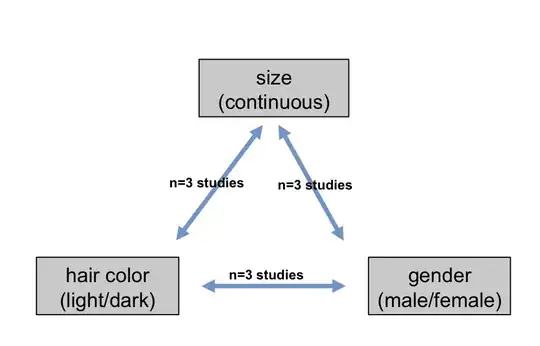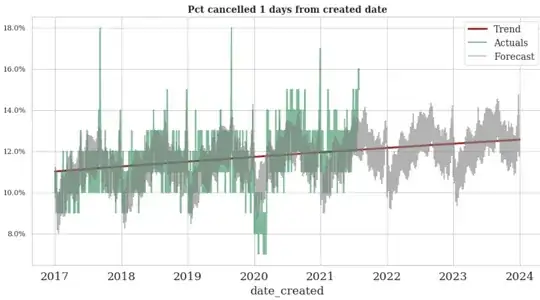My current struggle is to forecast the distribution of a given value across the next 360 days. e.g. The context is hotel accomodation bookings. We have a forecast of 100 bookings to be made for time t . What I need to forecast is when will these bookings checkin (in the next 360 days) , i.e. distributing the 100 bookings such that x% checkin +0 days from created date , y% checkin +1 day from created day and so on upto 360 days.
The percentages seem quite stable and forecastable (with some seasonality) - see figure below.

In forecasting these percentages I have to deal with the following constraints :
- The sum of these percentages should add up to 100% (i.e if i distribute 100 bookings over 360 days - that distribution should of course add up to 100%) Since I am forecasting each of these series separately , is there a smart way to do this in python without having to distirbute the spillover
- I am using Prophet to forecast these percentages , just to ensure I can put an upper cap to my percentages forecasted. The R squared values are quite poor . Are there any suggestions for a better modeling methodology I can use?
The title below should read Pct checkin 1 day from created date (instead of *Pct cancelled)
